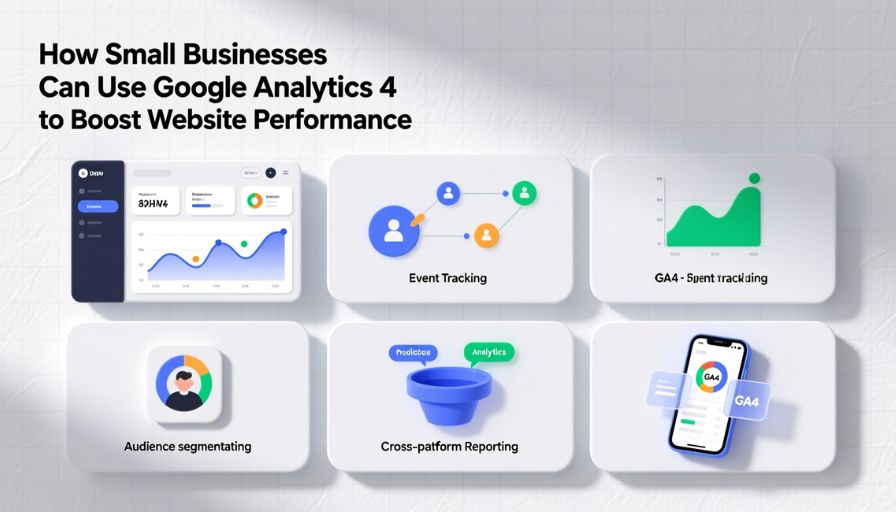In today’s digital-first world, small businesses can no longer afford to rely on guesswork when it comes to improving their online presence. With the release of Google Analytics 4 (GA4), companies now have access to a more advanced analytics platform that provides deeper insights into customer behavior. Many businesses have already started turning to professional consultants like Walker Analytics to better understand and act on this data, ensuring they get the most out of their marketing efforts. By learning how to harness GA4 effectively, even small businesses with limited resources can make data-driven decisions that lead to measurable growth.
Understanding the Shift from Universal Analytics to GA4
One of the most important things small business owners need to know is that GA4 is very different from the old Universal Analytics model. While the previous system was session-based, GA4 is entirely event-based, meaning that every interaction a user undertakes—such as clicks, scrolls, or purchases—is tracked as a standalone event. This enables businesses to gain a clearer understanding of the entire customer journey, rather than just isolated sessions.
The transition may feel overwhelming, especially for business owners accustomed to the older system, but GA4 was designed to provide businesses with greater flexibility. With GA4, you can tailor event tracking to match your unique business goals. For instance, a bakery running an e-commerce site might want to track how many customers add items to their cart but never complete a purchase, while a local consultancy firm might be more interested in lead form completions.
Customizing Event Tracking for Business Goals
One of GA4’s greatest advantages is its customizable event tracking system. Unlike the rigid structure of Universal Analytics, GA4 allows you to define what matters most to your business. This means you can measure micro-conversions like newsletter sign-ups, video views, or PDF downloads alongside major conversions such as completed sales or inquiries.
For small businesses, this flexibility is invaluable. By focusing on the interactions that truly matter, you avoid getting lost in irrelevant numbers. For example, a small boutique might discover that customers who engage with their product videos are twice as likely to make a purchase. By tracking this event, the business can allocate more resources to producing engaging video content and promoting it strategically.
Using GA4 to Improve Customer Experience
A key feature of GA4 is its ability to show how customers interact with your website across multiple devices and platforms. Customers today often begin browsing on their phones, later return on a laptop, and may even complete a purchase on a tablet. GA4’s cross-platform tracking helps you understand this complete journey, ensuring you don’t underestimate the value of specific touchpoints.
This insight can be crucial for small businesses. For instance, you may find that a majority of your customers are initially discovering your brand on mobile devices but completing purchases on desktops. With this information, you can optimize your mobile landing pages to ensure they are fast-loading and engaging, capturing potential customers’ attention during those first crucial seconds.
Leveraging GA4’s Predictive Insights
Another powerful addition to GA4 is its use of machine learning to provide predictive insights. These forecasts can help small businesses anticipate trends, such as which customers are likely to purchase again or which are at risk of leaving. Predictive audiences and revenue forecasts allow you to allocate marketing budgets more effectively and build targeted campaigns.
For example, a coffee shop that sells subscriptions for home delivery could use GA4’s predictive metrics to identify which customers are most likely to cancel their subscriptions. By spotting this trend early, the business can launch personalized offers or loyalty rewards to retain those customers before they churn.
Integrating GA4 with Marketing Strategies
GA4 doesn’t just collect data—it also integrates seamlessly with Google Ads and other marketing platforms. For small businesses, this integration means you can create more brilliant campaigns by targeting audiences who have already shown interest in your products or services. You can refine your campaigns to retarget customers who visited your site but didn’t complete a purchase, or to reward loyal customers with exclusive offers.
This targeted approach enables small businesses to maximize their limited marketing budgets. Instead of spending broadly, you can use GA4 data to ensure your money is being spent where it has the highest chance of generating a return.
Building a Culture of Data-Driven Decisions
Beyond the technical features, the real benefit of GA4 lies in encouraging small businesses to adopt a culture of data-driven decision-making. When decisions are based on real-time insights rather than assumptions, companies can operate more strategically. This might mean adjusting a marketing campaign on the fly, redesigning a page with high bounce rates, or doubling down on the content that drives the most engagement.
Over time, this culture enables even small teams to compete with larger businesses, not by outspending them, but by being more innovative and more agile with the data they already possess.
Conclusion
Google Analytics 4 represents a significant step forward for businesses of all sizes, but it is particularly valuable for small businesses striving to compete in crowded markets. By customizing event tracking, leveraging predictive insights, and integrating analytics into marketing strategies, small businesses can optimize their websites and customer experiences in meaningful ways. Partnering with specialists like Walker Analytics can further help businesses make sense of the data and put it into action. In the end, GA4 provides more than just numbers—it offers a pathway for small businesses to thrive through smarter decisions and measurable growth.
